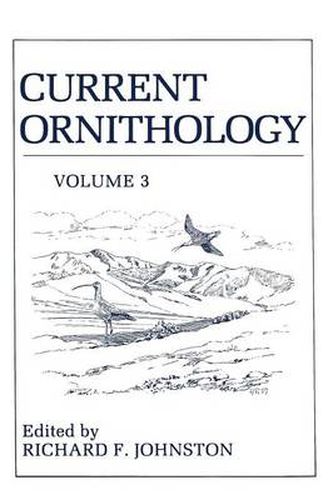Readings Newsletter
Become a Readings Member to make your shopping experience even easier.
Sign in or sign up for free!
You’re not far away from qualifying for FREE standard shipping within Australia
You’ve qualified for FREE standard shipping within Australia
The cart is loading…






This title is printed to order. This book may have been self-published. If so, we cannot guarantee the quality of the content. In the main most books will have gone through the editing process however some may not. We therefore suggest that you be aware of this before ordering this book. If in doubt check either the author or publisher’s details as we are unable to accept any returns unless they are faulty. Please contact us if you have any questions.
If it is still true that more than 80% of the ornithologists in North America are primarily interested or engaged in ecological studies on birds (J. R. King and W. J. Bock, Final Report of the Workshop on a National Plan For Ornithology, 1978), then Volume 3 of Current Orni thology is preadapted for their consideration. All but one article in this volume are somehow concerned with the ecological aspects of the bi ology of birds. Variation in the scope of topical coverage is relatively broad, and includes conservation, reproduction, behavior, community structure, and evolutionary ecology. Three reviews concern the pervasive effects of man and industry on various bird populations of the world. Risebrough provides a de tailed description of the relationships between pesticides and bird pop ulations. Morrison ass es ses aspects of bird population numbers as in dicators of environmental change, and Temple outlines current research on endangered species. The broad spectrum of reproductive ecology of birds is variously treated in this volume. Jehl and Murray explore sexual selection and some of the resulting complexities in the evolution of sexual size di morphism, primarily in shorebirds. Lawton and Lawton are concerned with the relationships between social behavior and breeding systems in which variation is found in the age at which reproduction is first undertaken. Oring examines the wide-ranging variation in polyandrous breeding systems in birds, while Rohwer is concerned with adoption versus infanticide in birds, and their relationships to reproductive fit ness.
$9.00 standard shipping within Australia
FREE standard shipping within Australia for orders over $100.00
Express & International shipping calculated at checkout
This title is printed to order. This book may have been self-published. If so, we cannot guarantee the quality of the content. In the main most books will have gone through the editing process however some may not. We therefore suggest that you be aware of this before ordering this book. If in doubt check either the author or publisher’s details as we are unable to accept any returns unless they are faulty. Please contact us if you have any questions.
If it is still true that more than 80% of the ornithologists in North America are primarily interested or engaged in ecological studies on birds (J. R. King and W. J. Bock, Final Report of the Workshop on a National Plan For Ornithology, 1978), then Volume 3 of Current Orni thology is preadapted for their consideration. All but one article in this volume are somehow concerned with the ecological aspects of the bi ology of birds. Variation in the scope of topical coverage is relatively broad, and includes conservation, reproduction, behavior, community structure, and evolutionary ecology. Three reviews concern the pervasive effects of man and industry on various bird populations of the world. Risebrough provides a de tailed description of the relationships between pesticides and bird pop ulations. Morrison ass es ses aspects of bird population numbers as in dicators of environmental change, and Temple outlines current research on endangered species. The broad spectrum of reproductive ecology of birds is variously treated in this volume. Jehl and Murray explore sexual selection and some of the resulting complexities in the evolution of sexual size di morphism, primarily in shorebirds. Lawton and Lawton are concerned with the relationships between social behavior and breeding systems in which variation is found in the age at which reproduction is first undertaken. Oring examines the wide-ranging variation in polyandrous breeding systems in birds, while Rohwer is concerned with adoption versus infanticide in birds, and their relationships to reproductive fit ness.